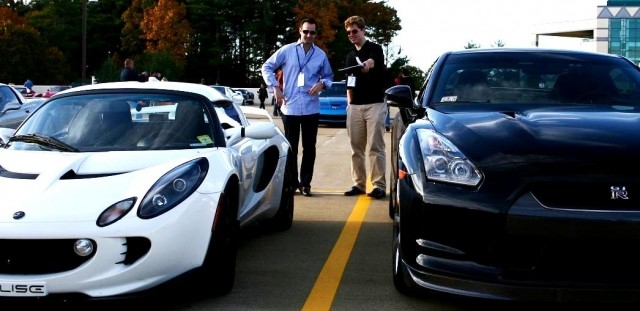There are different schools of thought when it comes to engineering the best sports car. In this day and age, it seems that the acquisition of more grip and greater power levels are what generally set the standard, and for good reason. Despite weighing two tons, cars like the Nissan GT-R and the Porsche 911 Turbo manage incredible lap times with their sophisticated, electronic trickery and enormous tires. That new school of thought may be becoming the norm, but there are still plenty of old school purists who abide by Colin Chapman’s eternal adage: simplify and add lightness.
Holding up the flag for the lightweight, unfiltered sports car has to be Lotus. Sure, other companies have stripped-down specials but Lotus is one of the few who have established a legacy on low-powered featherweights. The S1 Exige, as seen here, had a paltry 177 horses from the factory, differing slightly on the spec. Nevertheless, it manages to put pressure on the GT-R, a turbocharged muscle machine, at the very quick Circuit de Catalunya.
One would assume that with Catalunya’s fast corners and long straights, the GT-R run circles around the Exige, but a tidy driving line and an affinity for late-braking allows the Lotus’ driver to keep in touch. As the GT-R sails by on the start-finish straight, it misses its turn-in point and runs wide. This sort of display is poignant, because it seems that those two things define the GT-R’s lap, though its driver does a good job of managing that weight.
Where the Lotus shines is from corner entry to the apex, where it always seems to claw a few car lengths on the GT-R, but come corner exit, the Japanese missile streaks away. Determined to regain his position, the Exige driver pushes the limit and finds himself crossed up a few times with the Lotus’ twitchy rear end. This charge pays off eventually, when the brakes really come into play, and show just how capable trim, svelte sports cars can be.






















